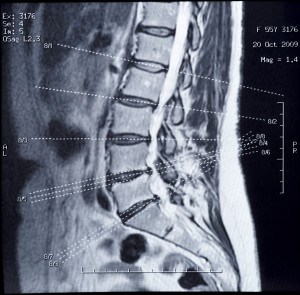The probability of injured workers getting back surgery depends on the area of the country in which they seek treatment for their back pain, according to a new study from the Massachusetts-based Workers Compensation Research Institute.
According to the study, Why Surgery Rates Vary, back pain is a critical issue in workers’ compensation. Approximately one-fifth of the injuries covered by workers’ compensation are back injuries.
Although common, how to best treat the injury—for example, when surgery is clinically appropriate or not—is controversial and lacks clinical consensus. Moreover, the frequency of surgery among workers with back injuries varies widely from state to state. For example, nearly 20 percent of injured workers with back pain had surgery in Oklahoma and Tennessee. By contrast, less than 10 percent of workers in California and Florida with the same diagnoses had surgery.
Among the study’s many findings is that more surgery-intensive local practice norms, higher reimbursement rates for surgery, and more surgeons in an area each independently were associated with higher likelihoods that an injured worker had back surgery. These factors contributed to the variation in back surgery rates, even after controlling for case mix. By contrast, these factors explained little of the variation in knee surgery rates, whereas case-mix factors were highly important. The findings can be used to shape discussions about second opinions, treatment guidelines, and fee schedules.
“This study addresses an important area of inquiry by investigating some of the hypotheses put forward to explain the wide variation in surgery rates. Some of the factors are within the control of workers’ compensation policymakers. Other factors result from the dynamics and practices of the larger health care system,” said Dr. Christine Yee, WCRI economist and one of the authors of the report.
The study analyzed workers in 13 states who had work-related back injuries. The authors followed their medical treatment for one year from the date of their injury and examined the factors that were associated with their having surgery or not. The data comprised workers’ compensation claims and payment data, group health claims data, and other sources of information related to the health care and economy of geographic areas.
The 13 states included in the study are California, Florida, Georgia, Illinois, Indiana, Iowa, Maryland, Michigan, North Carolina, Oklahoma, Pennsylvania, Tennessee, and Texas.
Source: WCRI
Was this article valuable?
Here are more articles you may enjoy.

 Rare Weather Warning Issued as Strong Gusts Fuel Colorado Wildfire Threats
Rare Weather Warning Issued as Strong Gusts Fuel Colorado Wildfire Threats  Poorer Americans Dropped Federal Flood Insurance When Rates Rose
Poorer Americans Dropped Federal Flood Insurance When Rates Rose  Insurance AI Demo Day Calendar Announced
Insurance AI Demo Day Calendar Announced  Trump Sues BBC for $10 Billion Over Documentary Edit
Trump Sues BBC for $10 Billion Over Documentary Edit 